Ready-To-Feed vs. Powdered Formulas
58 hours of research 6 minute read

As new parents, one of the most crucial decisions you'll make is choosing the right nutrition for your little one. Whether breastfeeding or considering formula feeding, understanding the options available is essential. Among the array of choices, ready-to-feed formula and powdered formula stand out as popular alternatives. Each comes with its benefits and considerations, influencing factors ranging from convenience to cost and nutritional content.
In this educational blog post, we'll delve into the key differences between ready-to-feed formula and powdered formula, offering insights to help you make an informed decision for your baby's health and well-being. From understanding the composition and preparation methods to exploring the practical aspects and nutritional variations, we'll guide you through the intricacies of these two common infant feeding options. So, let's embark on this journey to unravel the disparities between ready-to-feed and powdered formulas, empowering you to make the best choice for your little one's nutrition needs.
Ready-to-Feed Formula
In the whirlwind of parenthood, convenience often becomes a prized commodity. As new parents, finding efficient solutions that prioritize your baby's health and well-being can be a game-changer. Ready-to-feed formula emerges as a savior in the realm of infant nutrition, offering simplicity and peace of mind in equal measure.
Composition and Nutritional Profile:
Dive into the comprehensive breakdown of the ingredients and nutritional value of our Ready-to-Feed Formula.
- Ready-to-feed formula is precisely what its name suggests: a formula that requires no mixing or preparation.
- It comes pre-mixed with water and the necessary nutrients, making it a convenient option for on-the-go feeding or times when you're short on time.
- Despite its convenience, ready-to-feed formula maintains a nutritional profile comparable to other forms of infant formula, providing essential nutrients crucial for your baby's growth and development.
Benefits for Busy Lifestyles:
Explore how our Ready-to-Feed Formula caters to individuals leading fast-paced lives, providing convenience without compromising nutrition.
- For parents juggling multiple responsibilities, the ready-to-feed formula offers unparalleled convenience.
- Whether you're traveling, running errands, or simply in need of a quick feeding solution, the ready-to-feed option eliminates the hassle of measuring and mixing formulas, saving you precious time and reducing stress.
- It's also a popular choice for nighttime feedings, allowing tired parents to minimize disruptions and maximize rest.
Minimizing Risk of Contamination:
Learn about the stringent measures we employ to ensure the safety and purity of our Ready-to-Feed Formula, reducing the possibility of contamination.
- One of the significant advantages of ready-to-feed formula is its reduced risk of contamination.
- Since it comes in pre-sealed containers, there's no need for scoops, bottles, or water, minimizing the potential for bacterial growth or incorrect mixing that could compromise your baby's health.
Suitable for Sensitive Tummies:
Discover how our Ready-to-Feed Formula addresses the needs of those with delicate digestive systems, offering gentle nourishment for sensitive tummies.
- Some babies may have sensitive digestive systems or allergies that require special attention to their diet.
- The ready-to-feed formula offers a sterile and controlled environment, reducing the likelihood of contamination with allergens or irritants that could trigger adverse reactions in sensitive infants.
Tips for Usage and Storage:
Access expert advice on the optimal usage and storage practices to maintain the quality and freshness of our Ready-to-Feed Formula.
- When using ready-to-feed formula, ensure you check the expiration date on the packaging and discard any unused portions after feeding.
- Store unopened containers in a cool, dry place, away from direct sunlight.
- Once opened, refrigerate any unused portion promptly and use it within the recommended timeframe to maintain freshness and safety.
Advantages and Disadvantages
Advantages of Ready-to-Feed Formula:
- Convenience: Ready-to-feed formula requires no mixing or preparation, making it extremely convenient for parents, especially during busy or on-the-go situations.
- Reduced Risk of Contamination: Since ready-to-feed formula comes in pre-sealed containers, there's less risk of contamination compared to powdered formula, where incorrect mixing or improper storage could lead to bacterial growth.
- Time-Saving: With ready-to-feed formula, there's no need to measure out powder or mix it with water, saving parents time and simplifying the feeding process, particularly during nighttime feedings.
- Suitable for Sensitive Infants: Ready-to-feed formula offers a sterile and controlled environment, which may be beneficial for infants with allergies or sensitivities, as it reduces the likelihood of exposure to potential allergens.
- Easy Portability: Ready-to-feed formula comes in convenient single-serve containers, making it easy to transport and use while traveling or away from home.
Disadvantages of Ready-to-Feed Formula:
- Higher Cost: Ready-to-feed formula is typically more expensive than powdered formula on a per-ounce basis, which can significantly impact the overall cost of infant feeding, especially for families on a tight budget.
- Limited Availability of Varieties: Some specialty formulas or formulas designed for specific dietary needs may have limited availability in ready-to-feed form, compared to powdered formula, which often offers a wider range of options.
- Environmental Impact: The packaging used for ready-to-feed formula, such as single-serving bottles or tetra packs, can contribute to environmental waste, as they are often not as easily recyclable as the containers used for powdered formula.
- Storage Space: Ready-to-feed formula requires more storage space compared to powdered formula, especially if you stock up on larger quantities, which may be a consideration for families with limited storage space in their homes.
- Potential for Wastage: Once opened, the ready-to-feed formula must be used within a certain timeframe to maintain freshness and safety. This can lead to wastage if not all of the formula is consumed within the recommended period, especially for infants who may have varying feeding volumes.
Delving Deeper: European Powdered Formula Composition
When it comes to infant nutrition, parents around the world seek the best possible options to nourish their little ones. In recent years, European powdered formula has gained attention for its reputation of stringent regulations, high-quality ingredients, and nutritional excellence. But what exactly sets European powdered formula apart from other options, and what goes into its composition?
Stringent Regulations and Quality Standards:
- European powdered formula is subject to rigorous regulations and quality standards set by the European Union (EU) to ensure the safety, purity, and nutritional adequacy of infant nutrition products.
- These regulations encompass every aspect of production, from sourcing raw materials to manufacturing processes, packaging, and labeling, providing parents with peace of mind regarding the quality and safety of the products.
High-Quality Ingredients:
- European powdered formula is formulated with high-quality ingredients carefully selected to meet the nutritional needs of infants.
- Common ingredients include cow's milk protein, vegetable oils, lactose, vitamins, and minerals, sourced from reputable suppliers and adhering to strict quality control measures.
Emphasis on Natural and Organic Options:
- Many European powdered formula brands prioritize the use of organic ingredients and avoid artificial additives, colors, flavors, and preservatives whenever possible.
- Organic certification ensures that the ingredients used in powdered formula production are free from synthetic pesticides, hormones, and genetically modified organisms (GMOs), offering a more natural and wholesome option for infants.
Balanced Nutritional Profile:
- European powdered formula is formulated to mimic the composition of breast milk as closely as possible, providing infants with a balanced and complete source of nutrition.
- It contains essential nutrients such as proteins, carbohydrates, fats, vitamins, and minerals in optimal proportions to support healthy growth and development during the critical early months and years of life.
Fortification with Essential Nutrients:
- European powdered formula is fortified with essential vitamins and minerals to ensure that infants receive adequate nutrition for optimal health and well-being.
- Fortification helps address potential nutrient gaps and ensures that infants receive sufficient levels of nutrients such as vitamin D, iron, calcium, and omega-3 fatty acids, which are essential for brain development, bone health, and immune function.
Here are the top 5 most popular European powdered formula options
1. HiPP Baby Formulas: HiPP offers a range of organic baby formulas from various regions, including the UK, Germany, and the Netherlands. Their formulas are known for their high-quality ingredients and gentle formulations suitable for different dietary needs, such as comfort, anti-reflux, and hypoallergenic (HA).
2. Holle Baby Formulas: Holle is a trusted brand known for its organic baby formulas, including options such as goat milk formulas and formulas made with biodynamic ingredients. Their products are well-regarded for their commitment to sustainability and natural farming practices.
3. Aptamil Baby Formulas: Aptamil is a popular choice among European parents, offering a variety of formulas to support different stages of infant development. Their formulas include options like Aptamil Gold+ and Aptamil Pepti, catering to babies with specific dietary requirements such as reflux and comfort.
4. Kendamil Baby Formulas: Kendamil is known for its organic baby formulas, including options made with goat milk and organic cow's milk. Their formulas are manufactured in the UK and are free from palm oil, providing a natural and nutritious choice for parents seeking high-quality infant nutrition.
5. Lebenswert Baby Formula: Kendamil is known for its organic baby formulas, including options made with goat milk and organic cow's milk. Their formulas are manufactured in the UK and are free from palm oil, providing a natural and nutritious choice for parents seeking high-quality infant nutrition.
These brands are widely recognized for their commitment to quality, organic ingredients, and adherence to European Union regulations regarding infant formula production. Parents often choose these options for their baby's health and well-being.
The Feeding Ritual: Preparation Process of Ready-to-Feed vs. Powdered Formula

Feeding your baby is more than just providing nutrition—it's a bonding experience, a moment of connection, and a ritual of love. Whether you opt for ready-to-feed formula or powdered formula, the preparation process plays a significant role in this cherished ritual.
Preparation Process: Ready-to-Feed Formula
Convenience at Your Fingertips: The preparation process for ready-to-feed formula is as simple as it gets—just open the container, pour the desired amount into a sterilized bottle, and you're ready to feed your baby, eliminating the need for mixing, measuring, or heating, making ready-to-feed formula the ultimate convenience option for busy parents or on-the-go situations.
Minimal Risk of Contamination: Since ready-to-feed formula comes in pre-sealed containers, there's minimal risk of contamination compared to powdered formula, where improper mixing or storage could lead to bacterial growth, reducing the likelihood of digestive issues or foodborne illnesses in your baby and offering peace of mind to parents concerned about their little one's health and safety.
Perfect for Nighttime Feedings: Ready-to-feed formula is a lifesaver during nighttime feedings when every minute counts and exhaustion reigns supreme, allowing you to quickly satisfy your baby's hunger and get back to precious moments of rest without disruption, as there's no need to measure, mix, or warm up the formula.
Preparation Process: Powdered Formula
Precision in Mixing: Preparing powdered formula requires a bit more effort and attention to detail compared to ready-to-feed formula, as you'll need to measure the appropriate amount of water and formula powder according to the instructions on the packaging, ensuring the correct ratio for optimal nutrition.
Sterilization and Hygiene: Before preparing powdered formula, it's essential to sterilize the feeding equipment, including bottles, nipples, and any utensils used for mixing, as maintaining strict hygiene practices helps minimize the risk of bacterial contamination and ensures your baby's safety and well-being.
Flexibility in Temperature: Unlike ready-to-feed formula, which is served at room temperature, the powdered formula allows you to adjust the temperature of the prepared formula to your baby's preference, offering the flexibility to serve it cold, at room temperature, or warmed up slightly, depending on your baby's preferences and feeding habits.
Exploring Nutritional Variations and Considerations in Infant Formula
Nutritional Variations in Infant Formula:
- Protein Composition - Infant formulas vary in their protein composition, with some formulas containing predominantly cow's milk protein, while others utilize hydrolyzed proteins or alternative protein sources for infants with specific dietary needs or sensitivities.
- Fat Content and Essential Fatty Acids - Fat is a crucial component of infant formula, providing essential fatty acids necessary for brain development and overall growth. Formulas may differ in their fat content and types of fat used, with some formulas fortified with additional omega-3 and omega-6 fatty acids to support cognitive development and immune function.
- Carbohydrate Sources - Carbohydrates serve as the primary source of energy in infant formula, with lactose being the most common carbohydrate found in formulas designed to mimic breast milk. Some formulas may use alternative carbohydrate sources such as corn syrup solids or maltodextrin, which can affect the sweetness and consistency of the formula and may be used in formulas for infants with lactose intolerance or other digestive issues.
- Vitamins and Minerals - Infant formulas are fortified with essential vitamins and minerals to ensure that babies receive adequate nutrition for optimal growth and development. Common nutrients added to infant formula include vitamin D, vitamin E, vitamin K, calcium, iron, zinc, and others, which play vital roles in bone health, immune function, and overall well-being.
Considerations for Selecting Infant Formula:
- Age and Developmental Stage - Infant formulas are often tailored to specific age groups or developmental stages, with formulations designed to meet the changing nutritional needs of growing babies.
- Special Dietary Needs or Considerations - Babies with special dietary needs, such as those with allergies, intolerances, or digestive issues, may require specialized formulas designed to address these concerns.
- Feeding Preferences and Practices - Consider your baby's feeding preferences and practices when selecting an infant formula, including factors such as feeding frequency, volume, and feeding method (bottle-feeding vs. breastfeeding).
Note: Consulting with a pediatrician or healthcare provider can help determine the most suitable formula for your baby's unique needs and circumstances.
Financial Wellness in Feeding: Cost Analysis of Ready-to-Feed vs. Powdered Formula
As parents, providing the best nutrition for our babies is a top priority. However, alongside considerations of quality and convenience, cost inevitably factors into the equation. When it comes to infant formula, understanding the financial implications of different options is essential for budget-conscious families. In this blog post, we'll conduct a thorough cost analysis of ready-to-feed versus powdered formula, exploring the long-term financial implications and considerations to help you make informed decisions that balance both your baby's needs and your budget.
Cost Analysis: Ready-to-Feed Formula
| Upfront Cost | Ready-to-feed formula typically comes with a higher upfront cost compared to powdered formula. The convenience of pre-mixed formula comes with a price, as it requires no additional preparation or equipment. |
| Cost per Serving |
Despite the higher upfront cost, ready-to-feed formula may have a lower cost per serving compared to powdered formula when considering factors such as wasted formula due to incorrect mixing or spoilage. With ready-to-feed formula, you use only what you need for each feeding, reducing the risk of waste and ensuring that every serving is fresh and ready to use. |
| Convenience Factor |
The convenience of ready-to-feed formula can translate into savings in other areas, such as time spent preparing the formula or purchasing additional equipment for mixing and storage. For busy families or parents with limited time and resources, the added convenience of ready-to-feed formula may outweigh the higher upfront cost. |
Cost Analysis: Powdered Formula
| Lower Upfront Cost | The powdered formula typically has a lower upfront cost compared to the ready-to-feed formula. While it requires additional preparation and equipment, the initial investment may be more budget-friendly for some families. |
| Cost per Serving |
While powdered formula may have a lower upfront cost, the cost per serving can vary depending on factors such as accurate measurement, proper mixing technique, and storage conditions. Improper preparation or storage of powdered formula can lead to waste, potentially increasing the overall cost per serving over time. |
| Bulk Purchasing and Savings |
Purchasing powdered formula in bulk quantities or taking advantage of sales and discounts can help reduce the overall cost per serving and provide long-term savings for budget-conscious families. By planning and stocking up on powdered formula when prices are low, you can minimize expenses without compromising on the quality of your baby's nutrition. |
Exploring Storage and Convenience Factors in Infant Formula
Storage and convenience factors are essential considerations when selecting infant formula, impacting the ease of feeding and overall experience for both parents and babies. By understanding the storage requirements, travel-friendliness, and preparation methods of different formula options, parents can make informed decisions that align with their lifestyle and feeding preferences.
Storage Factors:
Shelf Life:
- Shelf life varies between different types of infant formula and can be influenced by factors such as packaging, ingredients, and storage conditions.
- Ready-to-feed formula typically has a shorter shelf life once opened compared to powdered formula, which can be stored for longer periods when kept in a cool, dry place.
Proper Storage Conditions:
- Proper storage conditions are essential for maintaining the freshness and safety of infant formula.
- Both ready-to-feed and powdered formulas should be stored according to the manufacturer's instructions, away from direct sunlight, heat, and moisture, to prevent spoilage and bacterial contamination.
Travel-Friendly Options:
- Ready-to-feed formula is inherently more travel-friendly than powdered formula, as it requires no additional water or mixing equipment.
- Single-serving containers of ready-to-feed formula are convenient for on-the-go feeding and travel, eliminating the need for measuring or mixing formula on the fly.
Convenience Factors:
Pre-Mixed Convenience:
- Ready-to-feed formula offers the ultimate convenience for busy parents, requiring no mixing, measuring, or preparation.
- With ready-to-feed formula, you simply open the container and pour, making feeding time a breeze, especially during nighttime feedings or when you're on the move.
Flexibility in Preparation:
- The powdered formula provides flexibility in preparation, allowing you to customize the formula concentration based on your baby's needs and preferences.
- While powdered formula requires mixing and measuring, it offers the flexibility to prepare formula in advance and store it for later use, accommodating busy schedules and feeding routines.
Bulk Packaging Options:
- Powdered formula is often available in larger bulk packaging options, providing cost savings and convenience for families who go through the formula quickly.
- Bulk packaging allows you to stock up on formula and reduce the frequency of trips to the store, ensuring that you always have an ample supply on hand when needed.
Common Concerns and Myths About Infant Formula

In the world of infant nutrition, myths and misconceptions abound, often clouding parents' judgment and creating unnecessary worries. When it comes to infant formula, addressing common concerns and debunking myths is essential for empowering parents to make informed decisions about their baby's nutrition.
| Myth | Reality |
|---|---|
| Formula Feeding Is Inferior to Breastfeeding. |
While breastfeeding is widely recognized as the optimal source of nutrition for infants, formula feeding can also provide adequate nourishment for babies who are unable to breastfeed or whose mothers choose not to breastfeed. Infant formula is formulated to mimic the composition of breast milk as closely as possible, providing essential nutrients necessary for healthy growth and development. |
| Formula Feeding Leads to Obesity in Infants. |
There is no evidence to suggest that formula feeding inherently leads to obesity in infants. Like breastfeeding, formula feeding should be accompanied by appropriate feeding practices, such as responsive feeding and monitoring of feeding cues, to ensure that babies receive the appropriate amount of nutrition without overfeeding. |
| Formula-Fed Babies Are Less Intelligent Than Breastfed Babies. |
The notion that formula-fed babies are less intelligent than breastfed babies is unfounded and not supported by scientific evidence. Intelligence and cognitive development are influenced by a myriad of factors, including genetics, environment, and early stimulation, rather than the mode of infant feeding alone. |
| Formula Feeding Is Harmful to a Baby's Immune System. |
While breast milk contains antibodies and immune-boosting factors that can help protect babies from infections, formula-fed babies can still develop healthy immune systems. Proper hygiene practices, timely vaccinations, and a supportive environment play key roles in supporting a baby's immune system, regardless of their feeding method. |
| Formula Feeding Causes Digestive Issues and Allergies. |
While some babies may experience digestive issues or allergies related to formula feeding, these occurrences are relatively rare and often attributed to specific ingredients or intolerances rather than formula feeding itself. Specialized formulas are available for infants with specific dietary needs or sensitivities, providing alternative options for parents concerned about digestive issues or allergies. |
The choice between ready-to-feed formula and powdered formula hinges on various factors, including convenience, cost, and storage considerations. While ready to feed formula offers unparalleled simplicity and ease of use, it may come with a higher upfront cost and limited shelf life after opening. On the other hand, powdered formula provides flexibility in preparation and may be more cost-effective in the long run, but it requires additional steps for mixing and may pose storage challenges.
When opting for ready-to-feed formula, parents can explore a range of options such as Similac 360 Total Care infant formula ready-to-feed, Enfamil ready to feed formula, Nutramigen formula ready to feed, Gerber ready to feed formula, or Kendamil ready to feed formula, each tailored to meet the diverse needs of infants.
Understanding the difference between ready to feed formula and powder empowers parents to make informed decisions that align with their lifestyle, budget, and feeding preferences. Whether choosing the convenience of ready-to-feed formula or the flexibility of powdered formula, the ultimate goal remains the same: to provide babies with the nourishment they need to thrive and grow.
3 Most Popular European Powdered Formulas
Organic Life Start is committed to providing accurate, reliable, and trustworthy information to parents and caregivers. We carefully choose credible sources and follow a meticulous fact-checking process to uphold the highest standards in infant nutrition and parenting advice. To learn more about our dedication to accuracy, please explore our editorial guidelines.
Link To Sources


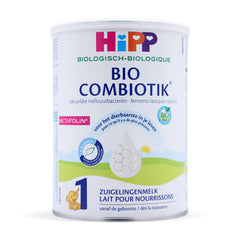
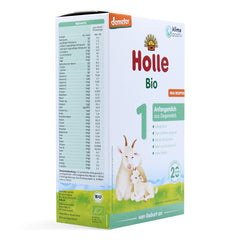
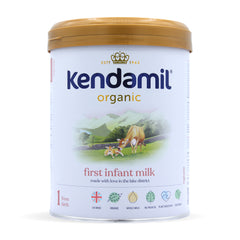
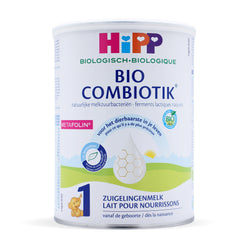
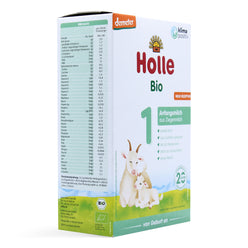

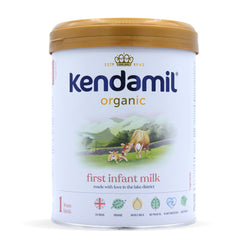
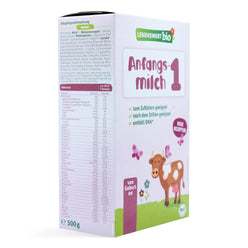






Rosemar P. -
Because it was so quick and easy, especially on those sleepless nights, I started feeding my newborn daughter Anastasia ready-to-feed formula. I was glad to switch to powdered formula—specifically, Kendamil Organic—as she grew older, and I’m still pleased with the decision.
Nolan -
September 27, 2025
During Ciara’s early years, I depended on Enfamil ready-to-feed due to its convenience, particularly on hectic days. However, I eventually saw that powdered mix offers greater flexibility and is more convenient for storage and travel. Upon extensive study, I discovered HiPP Dutch and was amazed by its superior quality and pure components relative to several alternatives. I think the best course of action would be to switch Ciara to powdered HiPP Dutch; she adjusted easily. Considering everything that has happened, I am more confident than ever before in giving her an option that will improve her health in the long run while still being easy for her to use.
Brittnie L. -
September 13, 2025
I used a U.S. ready-to-feed formula for my newborn son, Alejandro, since it was so easy and convenient, especially in those long, tiring days after birth. When I was finally at ease and began to explore other possibilities, I discovered the European formula Holle Goat, and I must admit, I was astounded. After feedings, Alejandro appeared much more at ease, and the environment felt cleaner and more natural. There was a little learning curve when we moved from ready-to-feed to preparing powdered formula, but it was well worth it. Providing him with this feels like I’m feeding him something good.